These Office to Farm Conversions Could Revolutionize How We Live and Eat [Daily CRE SPECIAL REPORT Part 3 of 3]
The third and final part of a three part series on the potental of office to farm conversion as a solution to our current office crisis.
Editor’s Note: This is Part 3 of a 3-part series looking at how office-to-farm conversions could provide a way out for distressed office owners, investors, and others that are dealing with this most monumental of modern real estate conundrums.
To read Part 2, click this link.
In the first two parts (Part 1, Part 2) of this series, we explored an innovative response to one of the most pressing challenges facing today's commercial real estate landscape—the surplus of vacant office spaces in urban centers.
We looked at how these dormant giants could be repurposed into hubs for urban agriculture, potentially breathing new life into cityscapes and redefining sustainability in 2024 and beyond.
Part 1 introduced us to the transformative concept of office-to-farm conversions, covering the potential for these projects to address both the serious real estate and downtown crisis as well as bolster growing urban food production needs.
In Part 2, we highlighted several pioneering projects already underway that highlight the feasibility and environmental benefits of bringing agriculture into the heart of our cities.
In Part 3, our focus will be on the economics that underpin office-to-farm conversions- and a look at if they’re actually a practical step forward for most office/commercial real estate owners.
Keep in mind that the viability and success of office-to-farm conversions depends on a several factors, including the initial investment costs for a project, ongoing operational expenses, market demand for locally grown produce, and ultimately, their capacity to turn a profit.
In this article, we’ll take on the whole enchilada.
We will scrutinize cost factors, funding sources, revenue streams, and return on investment while considering potential challenges that may arise.
We will also provide in-depth analysis on how these projects have the potential to revolutionize not just our physical surroundings and dietary habits, but also how they might influence broader economic patterns in the commercial real estate sector.
We will also answer the main question on everyone’s mind: is converting offices to farms simply a green dream?
Let’s find out.
Assessing Economic Viability
So, is repurposing office space into urban agricultural production centers actually financially viable?
Here are a few of the most important variables that investors, governments, and other stakeholders will use to answer that question.
Cost Factors in Converting Office Spaces to Farms
When considering the conversion of office space to farming use, several cost factors come into play. Firstly, renovation costs can be significant- with a recent NY Times estimate declaring that some conversion projects could reach as high as $500 per square foot.
Existing structures need retrofitting to accommodate agricultural needs such as controlled lighting, irrigation systems, and climate control technology. The initial investment in technology also represents a substantial portion of start-up costs. This includes advanced LED lighting for plant growth, vertical stacking systems to maximize space efficiency, and possibly robotics for planting and harvesting.
Ongoing operational expenses cannot be overlooked either—energy consumption from artificial lighting and climate control systems can be high. However, advancements in energy-efficient technologies could mitigate these costs over time. Additionally, labor costs may vary depending on the level of automation implemented on the farm.
Leverage Financial Models from Existing Projects
Case studies offer tangible evidence of economic success in this field. In the Netherlands—a country renowned for its innovative approaches to agriculture—technological advances have enabled high-yield production with minimal resources.
The Dutch model demonstrates how investing in cutting-edge vertical farming and seed technology can lead to a robust agricultural export market despite limited land availability. The country has had blockbuster success with the adoption of AI and other novel technologies to bolster their agricultural sector, with the Dutch economy earning an estimated 54.3 billion USD from agricultural exports in 2022.
This WaPo article is a fantastic look at how they’ve leveraged relatively little space, in concert with new tech to become a powerhouse in global food exports- and the technology that makes them such a robust agricultural producer.
Similarly, startups like Plenty Unlimited have adopted indoor vertical farming models that showcase scalability and potential profitability by supplying major retailers like Walmart with fresh produce grown locally in repurposed warehouses.
Above: Plenty Unlimited’s Scalable Indoor Vertical Farming Model in Action
Another compelling case is Area 2 Farms in Arlington, Virginia. By implementing their unique Silo system—a multilevel conveyor belt designed for efficient crop cultivation—they have created a year-round CSA program without needing significant alterations to existing building structures.
Learn more about Area 2 Farms.
AgriPlay Ventures' operation within Calgary Tower Center is a working model showing that vacant offices can become profitable agricultural spaces with minimal building modifications. The Candian firm was able to accomplish this thanks to their AI-powered modular growth systems that are both energy-efficient and easy-to-install.
Get more details about the Calgary Tower Center.
You can also read more about these projects (and a few others) in Part 2 of this series.
Financing and Investment Opportunities
Now let’s look at some of the various financing avenues and investment opportunities that are catalyzing the office-to-farm conversion space.
Major Funding Sources for Urban Farm Conversion Projects
Urban farm conversion projects require substantial initial capital, which can be sourced through a combination of private investments, government grants, and innovative financial instruments like green bonds.
Green bonds represent an emerging financing mechanism that allows investors to contribute to environmentally-friendly projects while receiving fixed income payments.
The proceeds from these bonds are earmarked for green projects, including the development of urban agriculture facilities that can help cities reduce their carbon footprint and enhance local food security.
Other prospective capital sources include:
-Private investors including individuals or firms interested in supporting sustainable ventures with the expectation of returns on their investment.
-Government grants with the aim to promote urban renewal and sustainability initiatives, providing non-repayable funds to projects that align with these goals.
Why Investors Might Be Interested in Office-to-Farm Conversions
Investor interest in sustainable development ventures has surged due to increasing awareness about climate change and social responsibility. Investors are motivated by both ethical considerations and the potential for long-term financial gains. Sustainable ventures often enjoy public support, favorable policy environments, and sometimes tax incentives—all factors that can enhance investment attractiveness.
The growing consumer demand for locally-sourced produce supports the business case for urban farms. Consumers are increasingly willing to pay a premium for fresh, sustainably-grown food, creating a viable market for urban agricultural products.
Source: Bloomberg: ESG, by the Numbers
In addition to direct financial returns, investors may also benefit from positive branding opportunities associated with supporting green initiatives.
Urban farms can contribute significantly to community well-being by providing access to fresh produce, creating jobs, and offering educational programs on nutrition and sustainability—outcomes that resonate well with corporate social responsibility (CSR) objectives.
Market Demand and Revenue Streams
The market demand for locally sourced produce has witnessed a significant uptick, primarily driven by an increasing consumer appetite for sustainability, traceability, and freshness in food products.
Source: USDA
This growing trend holds considerable implications for revenue potential in the agricultural sector, especially as it pertains to vertical and indoor farming ventures.
Market Demand for Locally Sourced Produce
A resurgence of interest in local food systems can be observed globally, with consumers more inclined towards understanding the provenance of their food and its environmental impact.
As we mentioned above, The Netherlands exemplifies this shift through its innovative approaches to agriculture that prioritize efficiency and reduced resource use. The Dutch model demonstrates that high-density urban farming not only meets local demands but also contributes significantly to global markets.
In the United States, too, the demand for year-round access to fresh produce is fueling growth in controlled-environment agriculture including vertical farms like Plenty Unlimited and Bowery Farming. These operations are increasingly partnering with large retailers such as Walmart and Albertsons, showing the potential, at least in some regions, for robust market demand.
Diversified Revenue Streams
To capitalize on growing demand, savvy firms, investors, and other stakeholders should embrace diversified revenue streams, including:
Direct Sales to Consumers
Direct-to-consumer models such as community-supported agriculture (CSA) programs offer a reliable income source while fostering consumer relationships. For example, Area 2 Farms utilizes a CSA model to serve local customers with fresh produce year-round.
Partnerships with Local Restaurants/Grocers
Establishing partnerships with restaurants and grocery stores allows farms to tap into established customer bases interested in quality and locality of ingredients—a strategy successfully employed by companies like Enza Zaden that provides seeds globally while supporting local growers.
Educational Programs
By offering educational tours or workshops on sustainable farming practices, businesses can generate additional income while promoting awareness about sustainable food production methods.
Agritourism
Agritourism offers another stream of revenue by attracting visitors interested in farm experiences or purchasing farm products directly from the source.
Technology Licensing & Consultancy
Some enterprises develop proprietary technologies or methodologies which they can license out or provide consultancy services for—this is seen in AgriPlay Ventures' approach where they integrate vertical farming systems into office spaces seeking new purposes.
Office-to-Farm Conversion Challenges
Every rose has its thorns…just like every night has its dawn…just like every cowboy sings his sad, sad song…
Poison lyrics aside, we don’t want you to get the wrong idea: there is a long road ahead, and not everyone will come out ahead in the end. Here are some of the challenges and considerations we might see in the space.
Governments may impose regulations that are not yet adapted to the unique aspects of vertical farming, such as building codes or zoning laws initially designed without consideration for agricultural use within urban environments. Additionally, food safety regulations may present compliance challenges for new farming technologies.
Market saturation is also a potential issue. With increasing numbers of startups entering the vertical farming space and large-scale operations expanding their footprint, there is a risk of market saturation. As competition grows, companies must differentiate themselves through quality, variety, efficiency, or technological innovation to maintain profitability.
And you can’t always count on tech to deliver on time, on budget. While advances in LED lighting have reduced energy costs significantly since the 1970s, further innovation is needed to make indoor growing systems more energy-efficient. The current limitations of technology can also restrict the variety of crops that can be grown economically within vertical farms.
Finally, scalability rears its head. Scaling up vertical farming operations from small pilot projects to large-scale commercial ventures presents numerous logistical challenges. These include securing sufficient funding for expansion, managing increased operational complexity, and maintaining product quality and consistency across larger volumes.
These challenges are by no means impossible, but they will require adept thinking, cooperative local authorities, and likely, deep pockets (or at least large credit lines or a big capital backer.)
Emerging Technologies a Driver of Growth?
Let’s take a look at the suite of emerging technologies in the urban farming space that can enhance efficiency, yield, and sustainability, key contributing factors to any successful farm, from 20-acre specialty farms to large-scale corn farms in the Heartland.
AI-driven Farming Systems
AI-driven farming systems leverage artificial intelligence to analyze data and optimize growing conditions, resulting in enhanced crop yields and resource management.
Bowery Farming
This New York-based startup uses machine learning algorithms to monitor plants and optimize growing conditions, resulting in reduced resource usage and increased crop yields.
On their “Artificial Intelligence” page they write:
“At Bowery, our farmers grow indoors, which provides us sustainable and scalable advantages. However, with thousands of crops growing at the same time—each with its own set of environmental preferences—our farms present a complicated decision-making challenge. This is where AI steps in: to help us constantly improve how we grow.
The BoweryOS serves as the central nervous system at each Bowery farm, offering plants individualized attention at scale. It works by collecting billions of data points through an extensive network of sensors and cameras that feed into proprietary machine-learning algorithms that are interpreted by the BoweryOS in real time.”
Advanced Hydroponics
Advanced hydroponics is a soilless farming method that uses nutrient-rich water solutions for growing plants, while aquaponics combines this with fish farming to create a symbiotic environment for both plants and aquatic animals.
AeroFarms
Located in Newark, New Jersey, AeroFarms operates one of the largest aeroponic systems in the world. It grows produce using mist rather than soil or water substrates, closely monitoring plant health with sophisticated analytics. Pictured below is their Danville, VA facility, capable of growing more than 3 million pounds of fresh leafy greens annually, according to a recent press release from the company.
Source: AeroFarms
Aquaponics
Aquaponics combines advanced hydroponics with fish farming to create a symbiotic environment for both plants and aquatic animals.
ECF Farmsystems
Based in Berlin, Germany, ECF Farmsystems combines aquaculture (raising fish) with hydroponics (soilless plant cultivation) in a closed-loop system called aquaponics that maximizes efficiency and sustainability.
Source: ECF Farmsystems
Robotic Harvesting
Robotic harvesting involves the use of automated machines and robotic arms to perform agricultural tasks like seeding, transplanting, and harvesting crops with precision and efficiency.
Iron Ox
Source: TechCrunch
This California-based company designs robots that can autonomously transplant seedlings as well as harvest and package mature plants within their indoor farming facility. In a sign that the challenges we discussed earlier are already here, the firm laid off half of its staff in November 2022.
Seed Technology
Seed technology encompasses the development of improved plant varieties through genetic modification or selective breeding, aiming to increase resilience, nutritional value, and productivity of crops.
Benson Hill Biosystems
Leveraging cloud biology, machine learning, and genomics, Benson Hill develops seed innovations to improve crop performance and sustainability.
Vertical Farming Techniques
As we mentioned earlier, vertical farming techniques involve stacking plant beds vertically in controlled environments to maximize space efficiency and crop output, often utilizing technologies such as LED lighting and hydroponic systems.
Sky Greens
In Singapore, Sky Greens' vertical farm uses hydraulic water-driven systems to rotate troughs of greens for even sunlight exposure. This patented A-frame system conserves energy while increasing productivity per square foot.
Broader Implications for Commercial Real Estate
So, what does this mean for the average commercial real estate investor?
We could see shifts in property values, land use policies, and zoning laws as urban agriculture becomes more prevalent.
The conversion of office spaces into farms—particularly vertical farms—can have a varied impact on property values. On one hand, repurposing vacant or underutilized commercial properties for urban agriculture can enhance their value by creating income-generating operations that also contribute to local food systems.
On the other hand, if these conversions become widespread without sufficient demand for agricultural products or ancillary services such as agritourism or educational programs, there may be an adverse effect on property values due to oversupply.
Urban farming initiatives often necessitate revisions in land use policies and zoning laws to accommodate agricultural activities within city limits. This may include allowing for mixed-use developments where residential spaces coexist with farming operations or revising height restrictions for rooftop gardens. As urban agriculture gains popularity, we can expect more municipalities to review their land use frameworks to support sustainable city living.
In some cases, these policy changes can lead to increased flexibility in the CRE market by allowing properties to be used for multiple purposes. However, they also require careful planning to ensure that new agricultural uses align with broader city planning goals such as maintaining adequate housing stock or preserving industrial zones crucial for economic activity.
Office-to-Farm Economic and Environmental Benefits
Beyond individual property considerations, office-to-farm conversions can contribute broadly to economic resilience and environmental sustainability:
By introducing new types of businesses into commercial districts—such as indoor farms—cities can diversify their economies beyond traditional sectors like finance or retail. Additionally, urban farms create jobs not only in farming but also in related areas such as distribution logistics, technology maintenance, and hospitality services linked with agritourism.
Furthermore, converting empty offices into green spaces helps reduce carbon footprints by shortening supply chains and absorbing CO2 emissions through plant photosynthesis.
They also often serve as community hubs where people learn about sustainable practices while accessing fresh produce—a positive social outcome alongside economic benefits.
Subscribe (for free!) below to get exclusive access to daily commercial real estate updates, including stories about the bleeding-edge of the CRE world. You can also go back and read Parts 1 and 2 by subscribing.
Follow us on Linkedin.
These Office to Farm Conversions Could Revolutionize How We Live and Eat [Daily CRE SPECIAL REPORT Part 1 of 3]
Thanks for reading Unreal Assets Daily CRE Update! Subscribe for free to receive new posts and support my work. Editor’s Note: This is Part 1 of a 3-part series looking at how office-to-farm conversions could provide a way out for distressed office owners, investors, and others that are dealing with this most monumental of modern real estate conundrums.
These Office to Farm Conversions Could Revolutionize How We Live and Eat [Daily CRE SPECIAL REPORT Part 2 of 3]
Thanks for reading Unreal Assets Daily CRE Update! Subscribe for free to receive new posts and support my work. Editor’s Note: This is Part 2 of a 3-part series looking at how office-to-farm conversions could provide a way out for distressed office owners, investors, and others that are dealing with this most monumental of modern real estate conundrums.



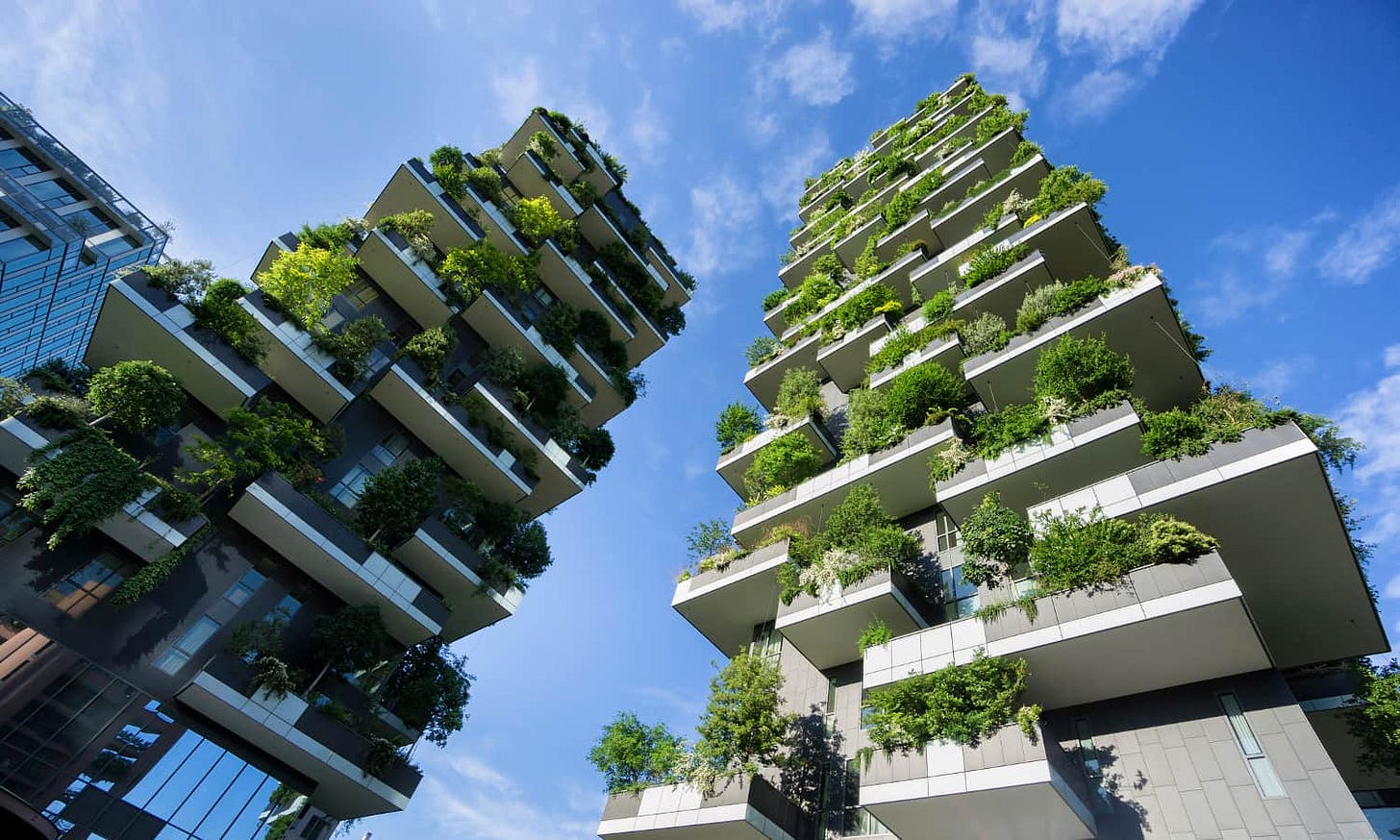



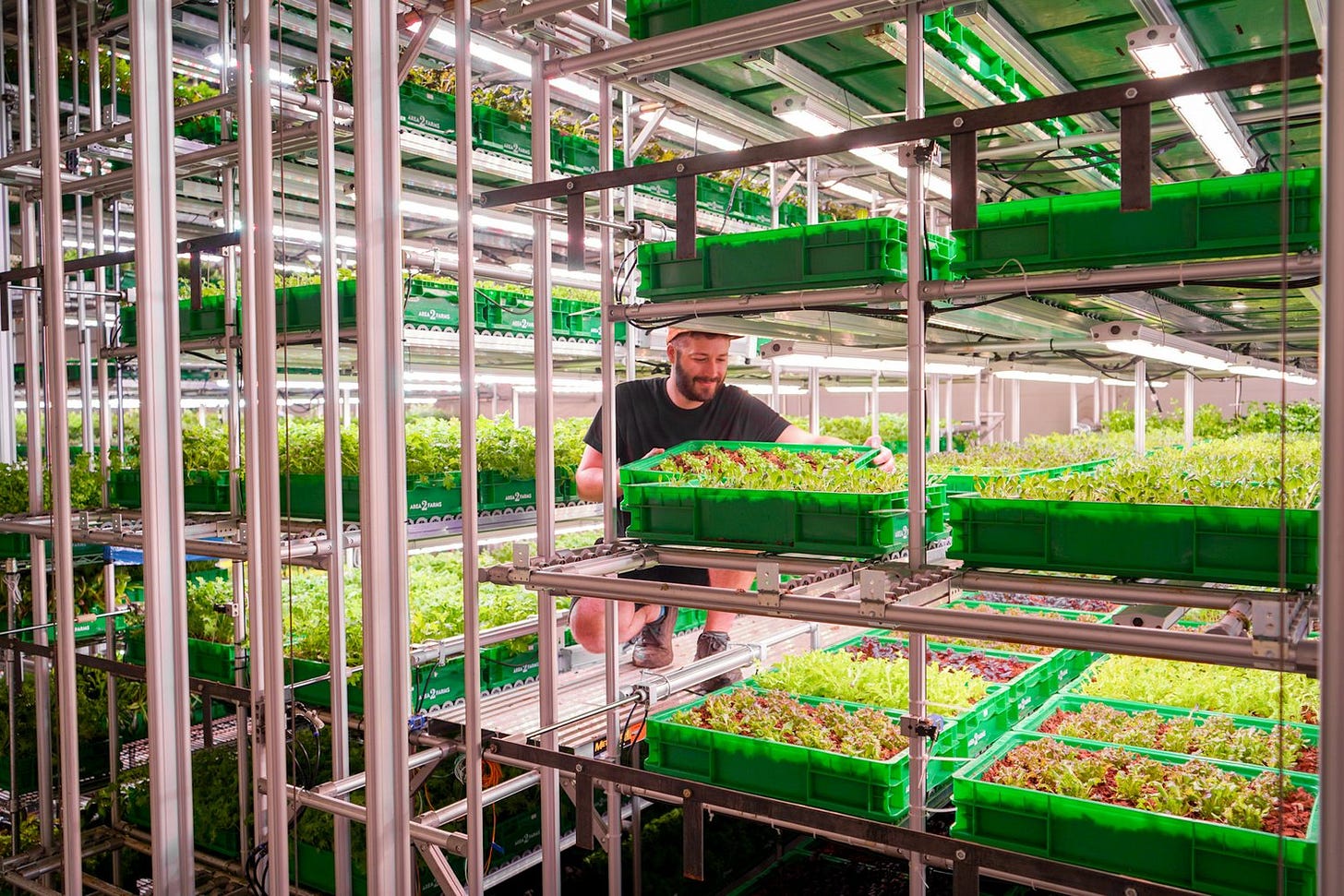

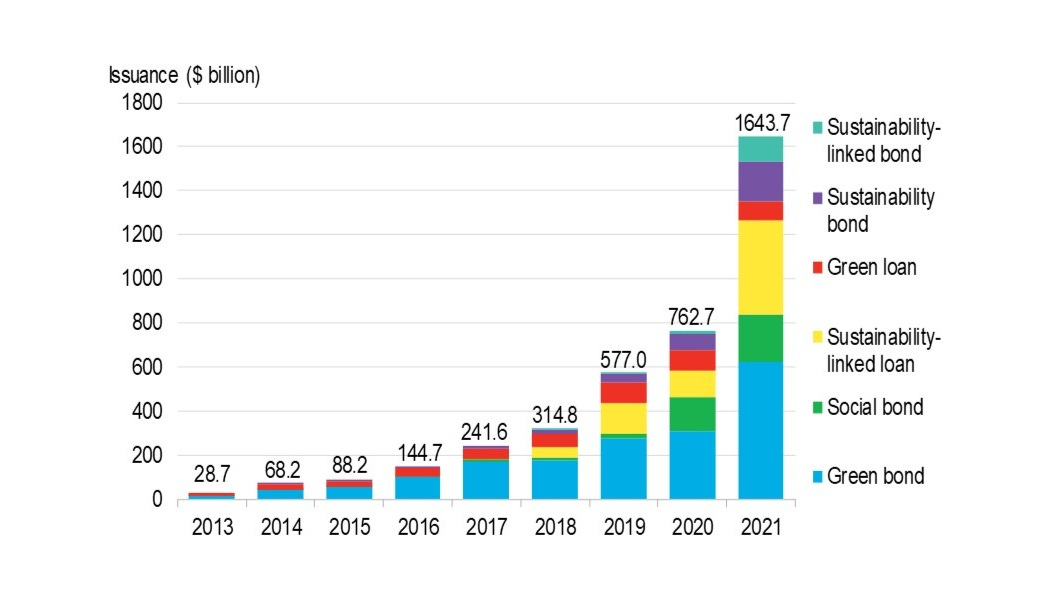
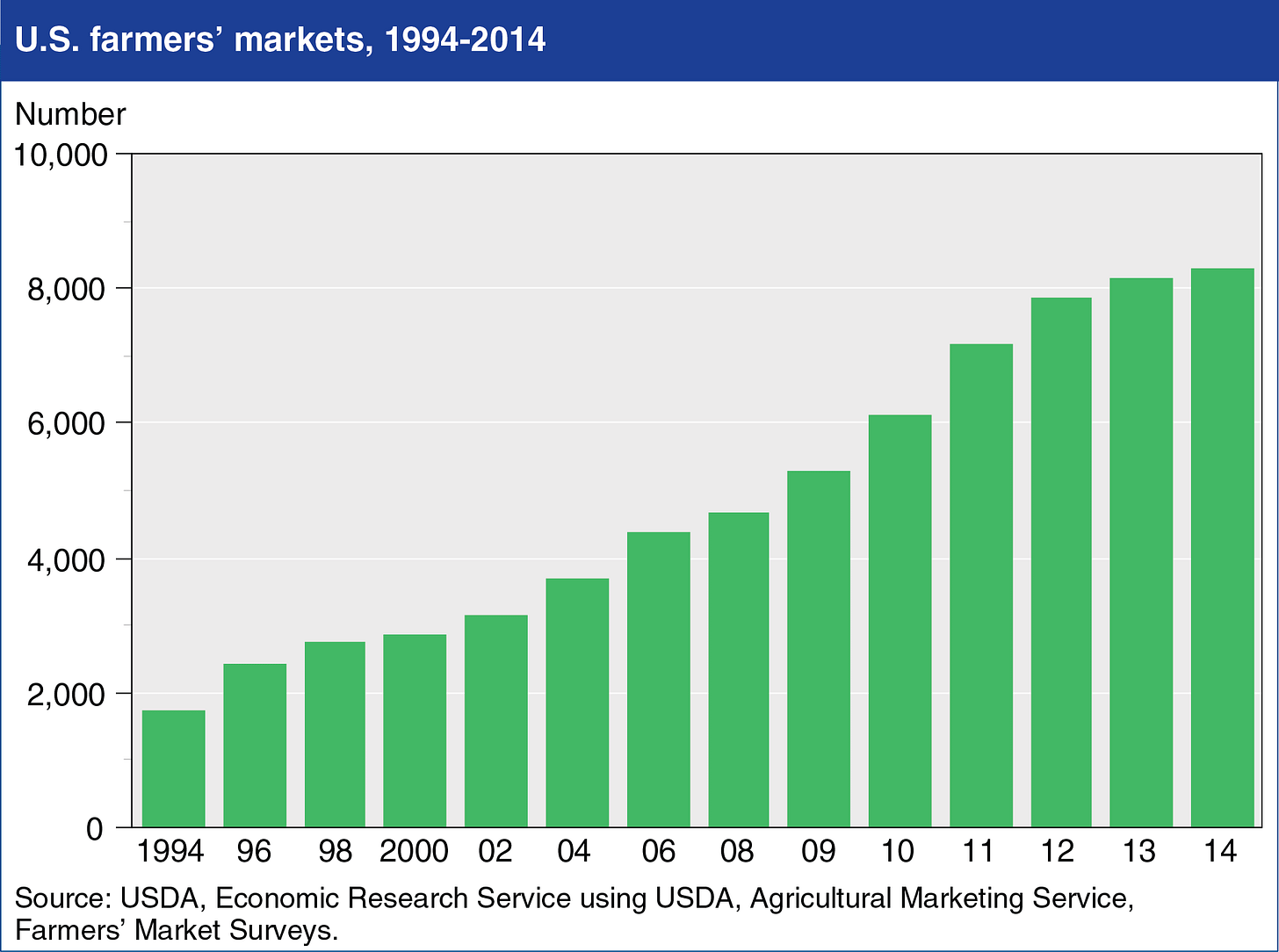

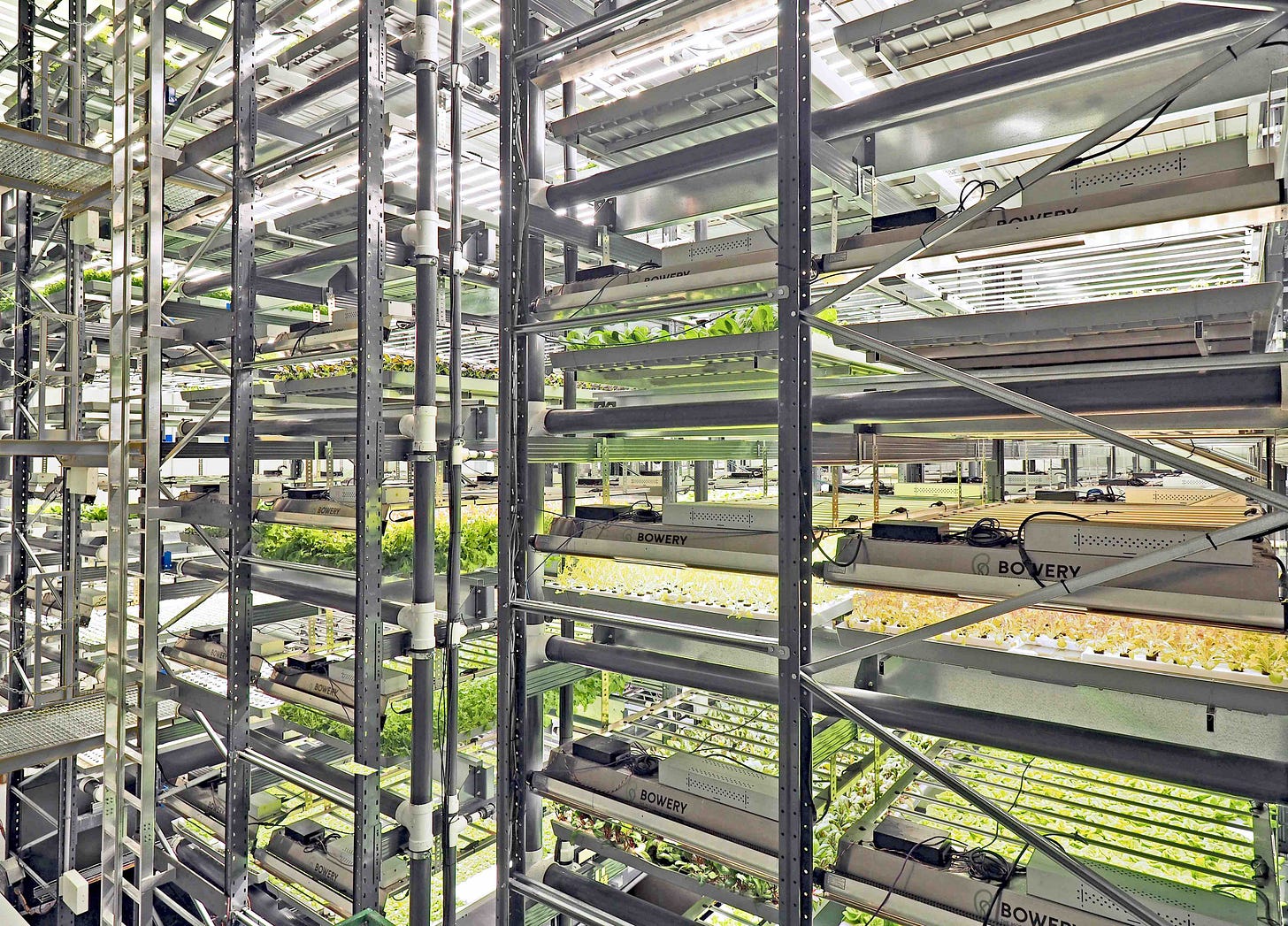


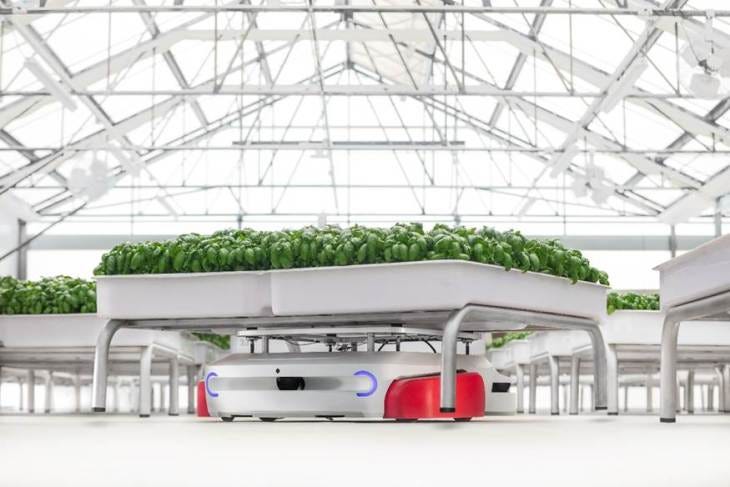
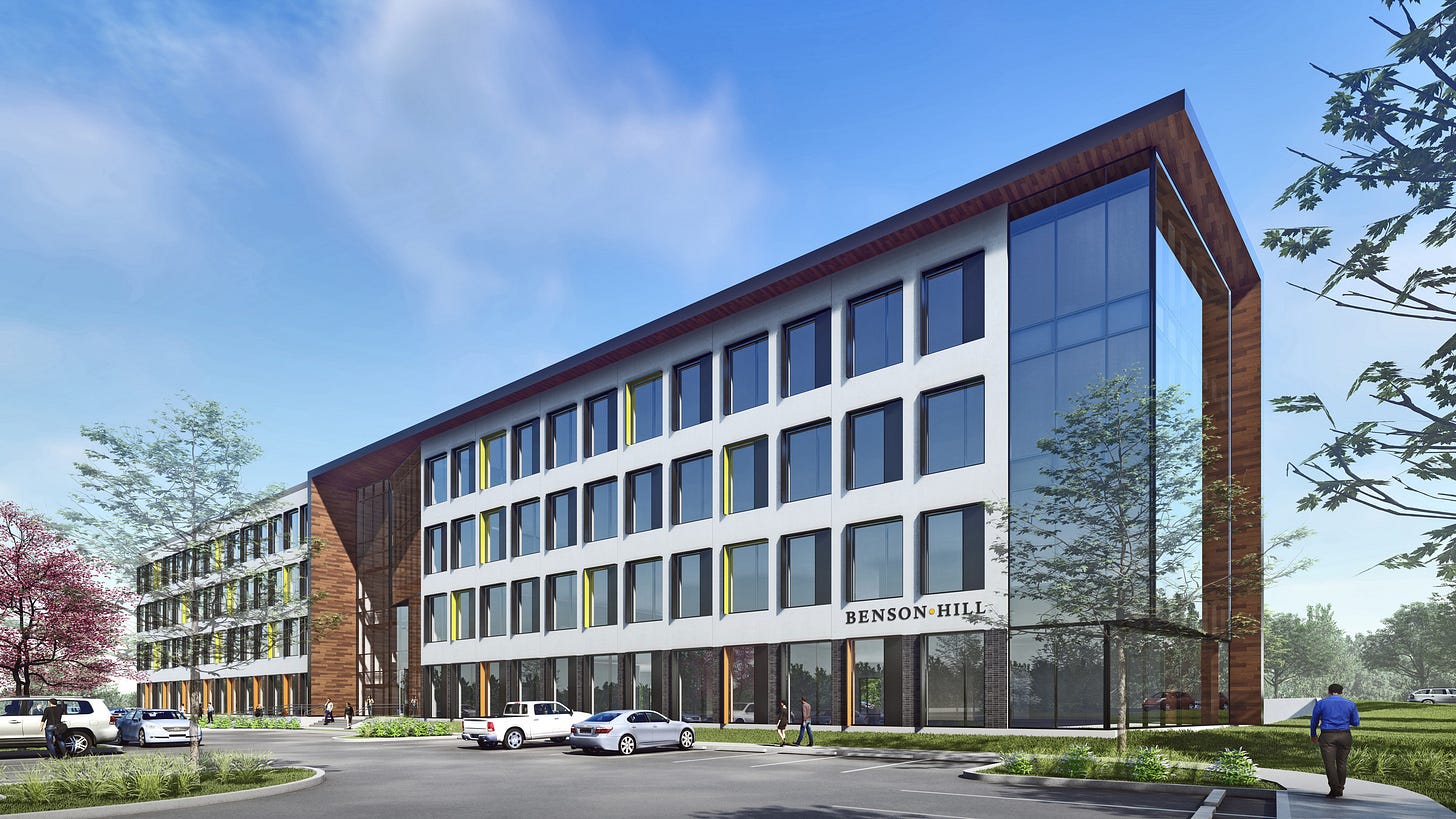

![These Office to Farm Conversions Could Revolutionize How We Live and Eat [Daily CRE SPECIAL REPORT Part 1 of 3]](https://substackcdn.com/image/fetch/$s_!8Sj8!,w_1300,h_650,c_fill,f_auto,q_auto:good,fl_progressive:steep,g_auto/https%3A%2F%2Fsubstack-post-media.s3.amazonaws.com%2Fpublic%2Fimages%2F6dfdb5eb-7e53-44fc-ac5d-fc565234dfec_700x394.jpeg)
![These Office to Farm Conversions Could Revolutionize How We Live and Eat [Daily CRE SPECIAL REPORT Part 2 of 3]](https://substackcdn.com/image/fetch/$s_!Acrs!,w_1300,h_650,c_fill,f_auto,q_auto:good,fl_progressive:steep,g_auto/https%3A%2F%2Fsubstack-post-media.s3.amazonaws.com%2Fpublic%2Fimages%2F38f06584-957b-468d-9214-44ce8e46305b_1384x1038.jpeg)